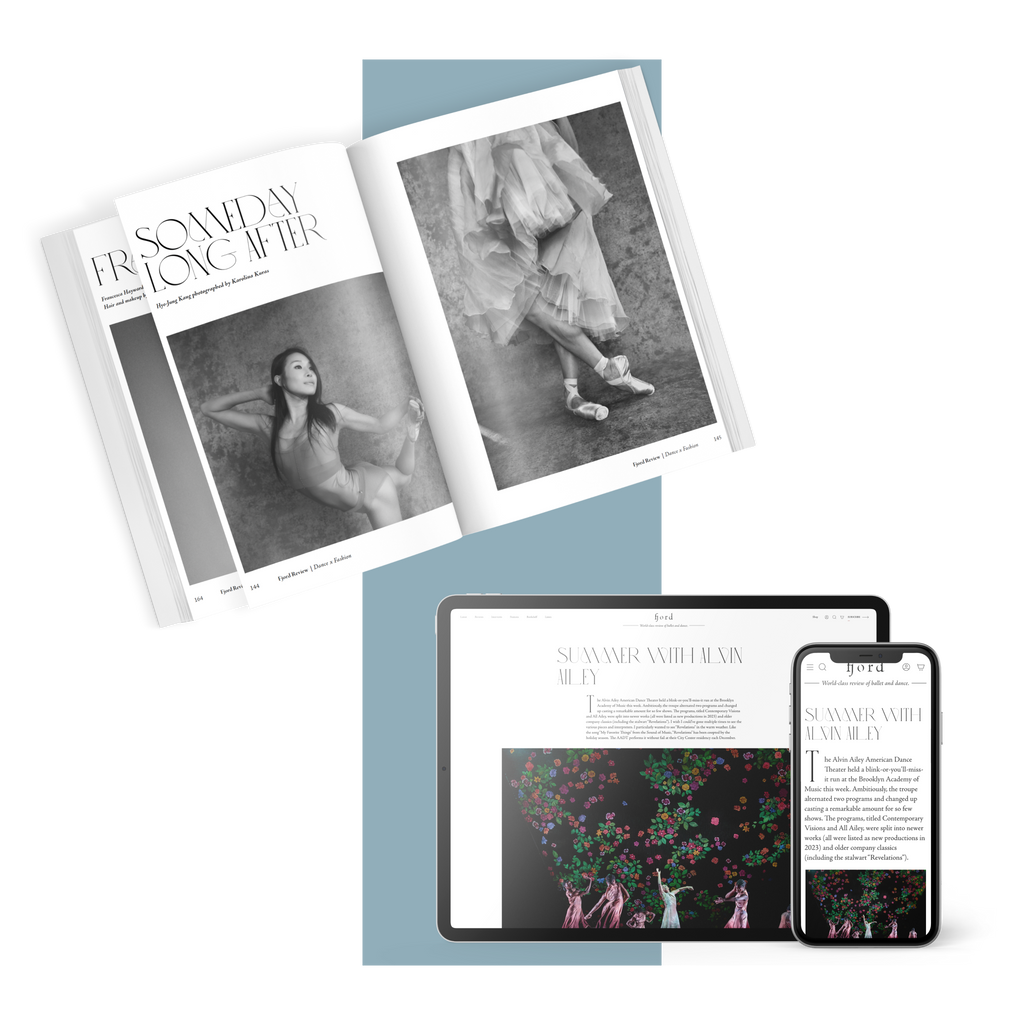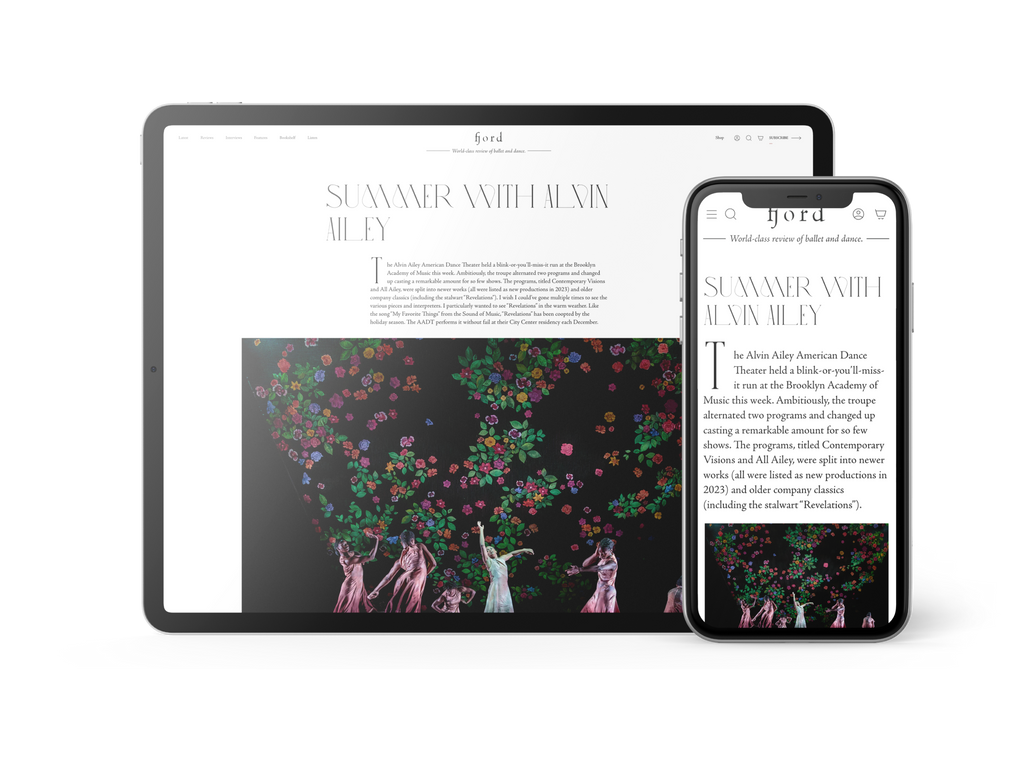Lycra and Lace
What is he looking at? The dancer in a blue biketard bounds around the stage, his curly hair flip-flopping as his head snaps right, left, and center.
Continua a leggere
World-class review of ballet and dance.
As a dancemaker, William Forsythe is often described in brassy terms: a neoclassical powerhouse, a rule-breaker who deconstructs classical ballet and flips it on its head. He’s known for his ultra-modern choreography and penchant for friskiness, both of which fuel his latest work, though not in the in-your-face way you might think. “A Quiet Evening of Dance” explores the calm side of mighty, the dynamism that comes with confident, composed choreography and performance.
Performance
Place
Words

Jill Johnson and Christopher Ronan “A Quiet Evening of Dance” by William Forsythe. Photograph by Bill Cooper


“Uncommonly intelligent, substantial coverage.”
Your weekly source for world-class dance reviews, interviews, articles, and more.
Already a paid subscriber? Login
What is he looking at? The dancer in a blue biketard bounds around the stage, his curly hair flip-flopping as his head snaps right, left, and center.
Continua a leggereTwo performers crawl in on hands and knees wearing neon green, hooded coveralls—the lightweight papery kind made for working in a sterile environment—and clusters of balloons pinned to their backs.
Continua a leggereWill Rawls makes boundaries visible by defying them. Known for the disciplinary and topical range of his projects, the choreographer, director, and performer approaches issues of representation in “[siccer],” a multi-part, multi-site work co-presented by L’Alliance New York’s Crossing the Line Festival. A live performance at Performance Space New York accompanies a multimedia installation at the Kitchen, a book published by Wendy’s Subway, and an album published by the artist. With a creative process reaching back to 2018, the work delves explicitly into pandemic-era energies and inertias with focused intimacy and a pervasive sense of instability.
Continua a leggereIt is always interesting when multiple theme steps emerge over the course of a mixed repertory evening, but it is uncanny on one featuring five different ballets, each with a different choreographer and composer, covering a twenty-year span (2005-2025).
Continua a leggere
comments